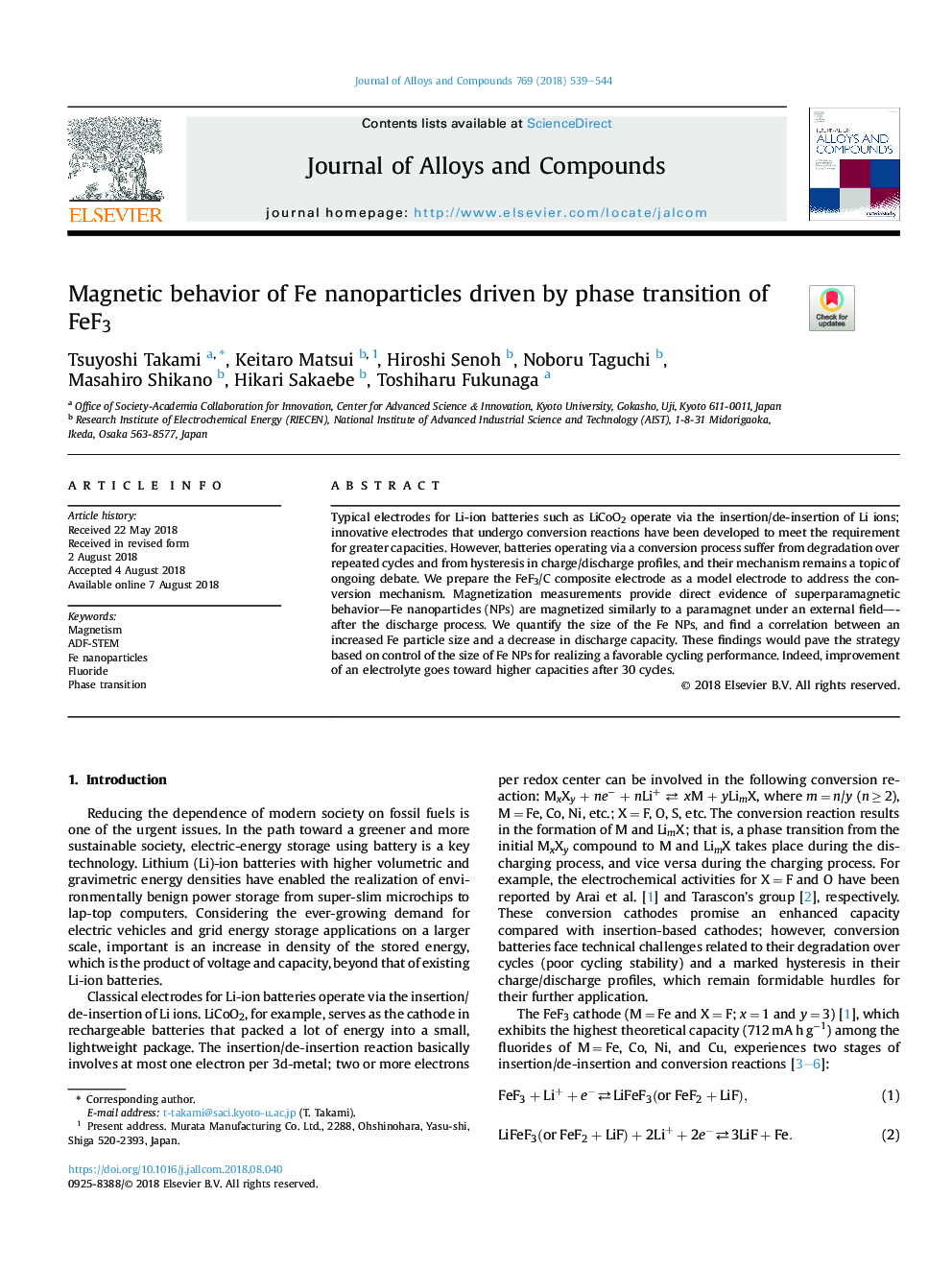| Article ID | Journal | Published Year | Pages | File Type |
|---|---|---|---|---|
| 7990046 | Journal of Alloys and Compounds | 2018 | 6 Pages |
Abstract
Typical electrodes for Li-ion batteries such as LiCoO2 operate via the insertion/de-insertion of Li ions; innovative electrodes that undergo conversion reactions have been developed to meet the requirement for greater capacities. However, batteries operating via a conversion process suffer from degradation over repeated cycles and from hysteresis in charge/discharge profiles, and their mechanism remains a topic of ongoing debate. We prepare the FeF3/C composite electrode as a model electrode to address the conversion mechanism. Magnetization measurements provide direct evidence of superparamagnetic behaviorâFe nanoparticles (NPs) are magnetized similarly to a paramagnet under an external fieldâafter the discharge process. We quantify the size of the Fe NPs, and find a correlation between an increased Fe particle size and a decrease in discharge capacity. These findings would pave the strategy based on control of the size of Fe NPs for realizing a favorable cycling performance. Indeed, improvement of an electrolyte goes toward higher capacities after 30 cycles.
Related Topics
Physical Sciences and Engineering
Materials Science
Metals and Alloys
Authors
Tsuyoshi Takami, Keitaro Matsui, Hiroshi Senoh, Noboru Taguchi, Masahiro Shikano, Hikari Sakaebe, Toshiharu Fukunaga,
